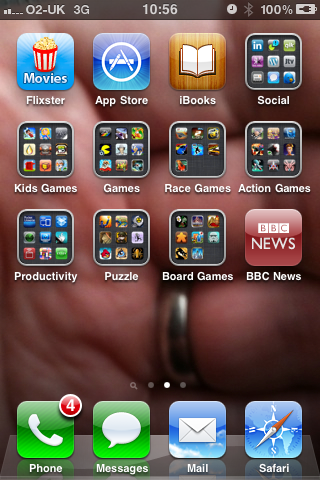From CNNMoney.com 77% of iPhone owners say they’ll buy another iPhone, compared to 20% of Android customers who say they’ll buy another Android phone. I’ll address these as the result of two separate things. SOFTWARE LOCK-IN Software lock-in on the iPhone is high for most people. Once you’re in there with Angry Birds, Plants vs … Continue reading “iPhone vs Android: software lock-in and halo effect”
From CNNMoney.com
77% of iPhone owners say they’ll buy another iPhone, compared to 20% of Android customers who say they’ll buy another Android phone.
I’ll address these as the result of two separate things.
SOFTWARE LOCK-IN
Software lock-in on the iPhone is high for most people. Once you’re in there with Angry Birds, Plants vs Zombies and any of the other paid-for iPhone apps, you’re going to suffer from an unconscious lock-in. This hasn’t really occurred on Android initially because of it’s slow adoption but more recently because it’s still not possible to actually be paid in many countries if you’re a developer which is slowing adoption as well. And because the good paid apps aren’t there, normal people aren’t buying them which is again reducing the lock-in.
Software lock-in (essentially meaning the ability to transfer your software to other similar devices but not other platforms) is working well for iPhone but is currently worthless on Android. Software lock-in is not a bad thing in itself – it can’t be used as an argument for or against any mobile platforms because all of them practise lock-in – but it has an effect.
For example, this is my page of folders on iOS:

Every one of those folders is an incentive to stay with iPhone. Primarily because there’s some good fun in there but also because my kids are really happy to be distracted by lots of different colourful games when we’re waiting in the car or during a long journey. Therefore I get additional lock-in pressure from my kids.
HALO EFFECT
In the office where I’m based there are six people. When I started there, one had an iPhone (me!). The others had a variety of Blackberry and Windows Mobile devices. Now, two years later there are five iPhones and one Android device in use. (One of the individuals went to HTC Magic running Android from Blackberry and since then has had a iPhone 3GS and is now on an iPhone 4.) The one Android device left here in the office is a HTC Hero still running Android 1.5. I would describe this as a Halo effect. Different to the common Halo effect (easily described as the effect of buying one device with an Apple logo meaning you buy a lot more), this is showing that experiences with the device are leading to others buying the device. This is partially related to software lock-in; people are interested in getting the same software as you.
For the record, the one Android device will apparently disappear from this office when the contract ends. This is not a good trend for Android.
I, myself, have bought each iPhone as it has been released (I’m still waiting for my iPhone 4 to arrive) but despite my interest in Android, I’ve yet to buy any hardware. This is entirely because the hardware churn in Android is extremely rapid which means there never seems to be a good time to buy. With the iPhone, you know there’ll be a new model every June but with Android, there’s a new model with slightly tweaked specifications coming out every month or so. And some of them have Android 2.1 and some have earlier versions of the OS but I’m expecting Android 2.2 – hence my reticence to buy now. The minimum specifications for Android seem to be rising and some features (such as the ballyhooed Flash) do not run on sub 1 GHz devices so this is again putting me off – 1 GHz has become the new minimum and currently shipping devices don’t seem to be exceeding this. Where’s the high end device?
All of this contributes to a ecology where Android is selling briskly (helped by Buy One, Get One Free tricks – also used by RIM but never by Apple) but that people are not returning to Android as a whole. It’s something that Google needs to resolve. And Nokia needs to respond as well – though they may have sold 10x the number of handsets as Apple, Apple is making more than 10x the amount of profit (creating a factor of nearly 100 difference between the companies). iPhone with it’s singular presentations (ignoring the current ‘legacy’ iPhone 3GS still being sold) is a clear marketing position. Nokia still produces dozens and dozens of different models. This is why iPhones in cafés are so recognisable but it’s so hard to identify the market share for any other individual model of phone. This contributes to the Halo effect I mention above. You can easily spot people using iPhones (and due to the dearth of ringtones, hear them). How about the frequency of spotting any other model or brand of phone?
